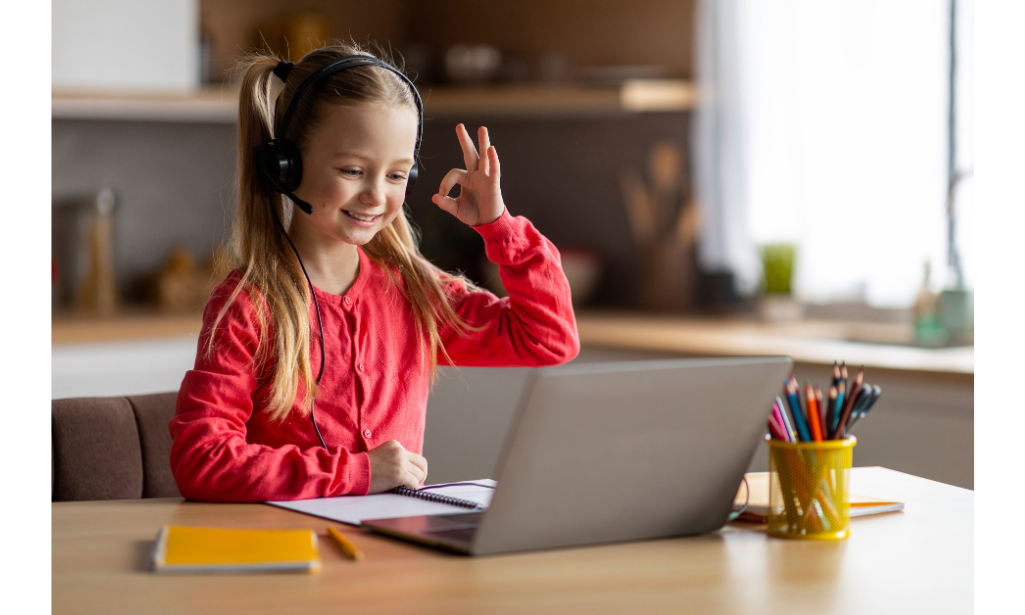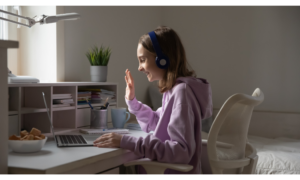Studies show many different ways that our brain processes and retains information. These methods are often referred to as learning styles. There are three main categories of learning styles: auditory, visual, and kinesthetic (hands-on). And while we use all forms, we each have tendencies that best help us categorize, retain, and analyze information. Put simply, most of us have one main way we learn best, and that is our preferred learning style.
Why Are Learning Styles Important?
Knowing your child’s learning style allows you to teach them in the way they learn best. It also helps you choose the right curriculum to unlock their full academic potential. Research shows that when we teach children using their primary learning style, they are better able to understand ideas, retain information, and master concepts. This translates to engaged learners who are less likely to get frustrated and students who are more willing to take risks and accept challenges.
These essential skills are important beyond just learning. Learning style impacts our ability to critically think, solve problems, and push through challenges. It helps us navigate relationships, impacts our ability to land and keep a job, and helps us make sound financial decisions.
That is why Bridgeway Academy places learning styles at the heart of every student’s education. Understanding each child’s preferred way of learning removes the anxiety of school and sparks a lifelong love of learning. Because when lessons are created and taught the way each child learns best, they begin to enjoy school and get more out of it.
Speaking your child’s learning language can be a challenge though, especially if you don’t know what it is. That’s why it all starts with finding out your child’s learning style.
What Are the Learning Styles?
Let’s look at the three types of learning styles, as well as some tools and tricks to keep in mind.
- Visual: Children who prefer to learn visually are often detail oriented and prefer written directions. Graphics, pictures, maps, graphs, or charts are often excellent ways to supplement course material.
Useful teaching tools include checklists with written instructions, flashcards, and graphic organizers. Online educational video games can be an excellent reward AND an effective learning tool for the visual learner.
- Auditory: Children who prefer auditory lessons need to both hear and repeat when absorbing information. Teaching tips include debate and discussion – keep back-and-forth conversation flowing. Look for opportunities to talk out ideas, interests, problems, and possibilities.
Keep in mind that auditory learners are often easily distracted by noise or commotion. Headphones can be helpful if this becomes an issue.
- Kinesthetic: These children always seem to be moving. But, remember that movement actually helps them learn best. Frequent breaks may be necessary, as well as hands-on activities.
Remember that kinesthetic learners need to keep their hands busy, so give them something to write down or highlight during lessons that are otherwise auditory or visual in nature. Look for lesson activities that include sculptures, crafts, or models of the discussion topic. Protip: repetitive movement while memorizing – trampoline, jumping rope, etc. – will help engage their brain!
No matter which methods you use, having a better understanding of how your child best absorbs and retains information is a crucial step in the process. Now comes the fun part…finding out how your child learns best! Bridgeway’s unique learning and personality style assessment provides insight into how the whole family can communicate, interact, and learn best together.
Why Learning Style-Focused Curriculum Matters
Once you know your child’s learning style and how to most effectively teach them, it’s time to start looking for the right curriculum. How can you make sure that you purchase the right curriculum? The best place to start is by matching homeschool curriculum to your child’s learning style. Here’s why.
- Learning style curriculum makes learning easier! We want our students to be challenged by the curriculum, but not so much that they struggle and lose their excitement to learn. Choosing a learning style curriculum that fits your child means you can provide the right amount of challenge while minimizing frustration. When we learn the way our brain needs to learn, it’s easier and more fun!
- Learning style curriculum means more learning success. Studies show that when students learn using their primary learning style, they score higher on tests, are more efficient with their time, and retain information longer. This results in more independence and confidence.
- Learning style curriculum ignites critical thinking. When we learn how our brain is meant to work, we can master concepts more quickly and move on to analysis, synthesis, and evaluation. When you teach with a learning style curriculum, you better equip your learners for higher-level critical thinking.
- Learning style curriculum increases focus. In a digital age where images, thoughts, and news fly around at a rapid rate, focus is harder than ever. But using a learning style curriculum makes learning more relevant and dynamic. That means your child stays focused longer and wants to engage.
- Learning style curriculum is simply more fun! When we fully engage in the learning process using our primary learning style, we enjoy what we’re doing, we ask questions, and we dig deeper.
How do you find the right learning style-focused curriculum? Start by knowing your child’s learning style! Then search for the best curriculum to match that learning language. Here are a few great ways to find the right match.
- Internet Search: Google “learning styles” or “how to know my child’s learning style.” From there, read the articles and reviews to determine the right curriculum fit.
- Curriculum Reviews: After you narrow your search, start reading curriculum reviews. Reading about other homeschool parent experiences helps you to identify which publishers are potential fits.
- Your Homeschooling Network: Tap into your homeschooling group or ask around some online homeschooling groups. Then watch the recommendations roll in!
- A Homeschool Curriculum Partner: If you’ve done all of the above and are still left wondering how to match your child’s learning style to the best homeschool curriculum, use a dedicated homeschool partner who can help you select the perfect curriculum for your child. As experts in homeschooling and curriculum, Bridgeway Academy has been helping homeschooling families find the best homeschool curriculum that suits each child’s needs and learning style for more than 35 years. After determining your child’s learning style and your homeschool teaching style, Bridgeway will match you with the best-fitting curriculum for each subject, selecting from dozens of publishers.
At Bridgeway Academy, learning styles are the foundation upon which we build each child’s personalized education. When you enroll with Bridgeway, you’ll pair up with an experienced academic advisor who will help you create the perfect customized learning experience based on learning style. To learn more, download Bridgeway’s Guide to Learning Styles and Tips for Different Learning Styles resources, and call (888) 303-7512 to speak to an educational consultant.







 Useful teaching tools include checklists with written instructions, flashcards, and graphic organizers. Online educational video games can be an excellent reward AND an effective learning tool for the visual learner.
Useful teaching tools include checklists with written instructions, flashcards, and graphic organizers. Online educational video games can be an excellent reward AND an effective learning tool for the visual learner. Keep in mind that auditory learners are often easily distracted by noise or commotion. Headphones can be helpful if this becomes an issue.
Keep in mind that auditory learners are often easily distracted by noise or commotion. Headphones can be helpful if this becomes an issue. Remember that kinesthetic learners need to keep their hands busy, so give them something to write down or highlight during lessons that are otherwise auditory or visual in nature. Look for lesson activities that include sculptures, crafts, or models of the discussion topic. Protip: repetitive movement while memorizing – trampoline, jumping rope, etc. – will help engage their brain!
Remember that kinesthetic learners need to keep their hands busy, so give them something to write down or highlight during lessons that are otherwise auditory or visual in nature. Look for lesson activities that include sculptures, crafts, or models of the discussion topic. Protip: repetitive movement while memorizing – trampoline, jumping rope, etc. – will help engage their brain! 

